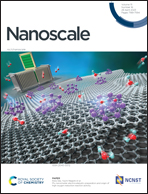Designing ECM-inspired supramolecular scaffolds by utilizing the interactions between a minimalistic neuroactive peptide and heparin†
Abstract
Short bioactive peptide-based supramolecular hydrogels are emerging as interesting candidates for developing scaffolds for tissue engineering applications. However, proteins and peptides represent only a single class of molecules present in the native ECM, thus, recapitulating the complete ECM microenvironment via only peptide-based biomaterials is extremely challenging. In this direction, complex multicomponent-based biomaterials have started gaining importance for achieving the biofunctional complexity and structural hierarchy of the native ECM. Sugar–peptide complexes can be explored in this direction as they provide essential biological signaling required for cellular growth and survival in vivo. In this direction, we explored the fabrication of an advanced scaffold by employing heparin and short bioactive peptide interactions at the molecular level. Interestingly, the addition of heparin into the peptide has significantly modulated the supramolecular organization, nanofibrous morphology and the mechanical properties of the scaffold. Additionally, the combined hydrogels demonstrated superior biocompatibility as compared to the peptide counterpart at certain ratios. These newly developed scaffolds were also observed to be stable under 3-D cell culture conditions and supported cellular adhesion and proliferation. Most importantly, the inflammatory response was also minimized in the case of combined hydrogels as compared to heparin. We expect that this approach of using simple non-covalent interactions between the ECM-inspired small molecules to fabricate biomaterials with improved mechanical and biological properties could advance the current knowledge on designing ECM mimetic biomaterials. Such an attempt would create a novel, adaptable and simplistic bottom-up strategy for the invention of new and more complex biomaterials of ECM origin with advanced functions.



 Please wait while we load your content...
Please wait while we load your content...